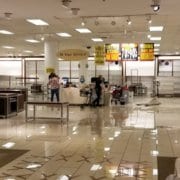Adapting to Changing Opportunities in the CRE Market
Philosopher Heraclitus once said, “The only thing constant is change”. The ability to anticipate, recognize, acknowledge, and adapt to this change is key to success in the commercial real estate industry. It may sound easy in concept, but it’s not always that simple in practice.
Understanding Change
Change is an ongoing process, not a one-time event. It typically does not happen instantaneously and cannot always be anticipated long in advance. Further, multiple change events may be happening simultaneously. Below are some examples of changes we are seeing in the commercial real estate:
- Demographic shifts, such as the rise in Millennial investors
- Evolving regulations and tax structures, including opportunity zones and crowdfunding
- Economic and political shifts, as well as globalization
- Movement through the CRE cycle
- Rise of the sharing economy
- Higher interest in alternative asset classes
- Pressure to invest in social impact development, adaptive reuse, and green initiatives
- Tenant preferences for experiences over products
- Expansion to secondary and tertiary markets
And this is just the tip of the iceberg when it comes to new opportunities in the CRE market. Nonetheless, the idea of “change” presents a challenge that commercial real estate companies must address.
Responding to Change
According to Forbes, “Companies don’t fail because of changes in the environment; they fail because their leaders are either unwilling or incapable of dealing with said change”. It’s human nature to be reluctant to change. It’s easier to do nothing than to do something because it doesn’t require us to take any risks or to leave our comfort zone. But doing things “the way they have always been done” is not an effective business strategy when the CRE market is in a constant state of flux. Further, adapting to change is what keeps firms relevant, valuable, and ahead of the competition.
Managing Change
Change is hard. It requires people to shift away from what they know, to abandon certain patterns and habits, and to transition into a new way of doing things. But ignoring change in the industry is no longer really an option. The following steps will help your firm to prepare for change and to respond more effectively.
Recognize Change
Regardless of the degree of change, it’s easier to accommodate if you break it down:
- Current State: How are things done today? What are the current challenges you address in the market? How are you responding to those market needs? How are you structuring your firm’s resources in order to effectively meet client demand?
- Transition State: What is going on that is provoking change? How are market demands, challenges, and expectations evolving? What resources do you currently have to address those issues, and where do you need to restructure or acquire resources? Are there new ways of thinking or processes that also need to be considered?
- Future State (or rather, The Unknown): Are you fully addressing the changes? Are your efforts and initiatives still aligned with the firm’s goals? Are there other ways to reach max effectiveness in adapting to change? How will you continue to monitor the market and identify opportunities?
Think About the Big Picture
While change may require a shift in thinking and new processes that slow you down in the short-term, take a step back and consider the long-term strategy. If you continue with your current paths and ways of thinking, will you continue to be able to meet investor expectations?
Also consider your competitors – how are they responding to changes in the market? Are there areas you should expand or shrink focus in order to remain competitive? Remember, change isn’t always a bad thing. More often than not, these are merely new opportunities that you can take advantage of and leverage.
Leverage Technology
As the industry changes, so do investor expectations. The best way to consistently produce a winning investor experience in the midst of this change is to provide real-time, on-demand, on-the-go availability and transparency that offers your investors convenience, control, and insights about their investments. Further, technology enables you to expedite response time to rising opportunities and adapt to these changes at scale.
To close out with another quote, Charles Darwin said, “It is not the strongest of the species that survives, nor the most intelligent that survives. It is the one that is most adaptable to change.”











